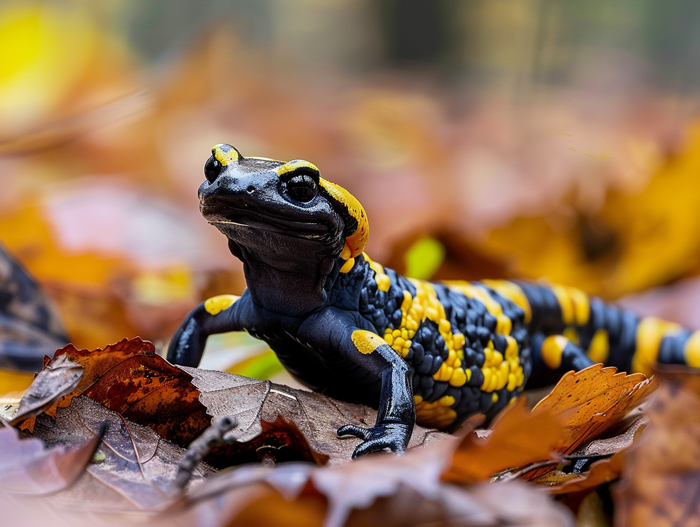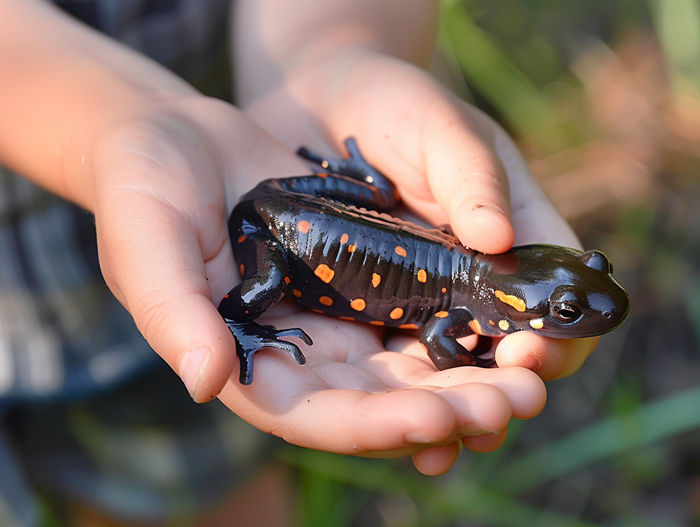Are you looking to learn how to trap a salamander? Salamanders are fascinating creatures that can be found in various habitats, and trapping them can be a rewarding experience. In this text, you’ll discover effective techniques to safely and humanely trap salamanders for research, observation, or relocation purposes.
Trapping a salamander requires careful planning and the right tools. By understanding the behavior and habitat preferences of these amphibians, you can increase your chances of successfully trapping them. Whether you’re a wildlife enthusiast, researcher, or simply curious about salamanders, mastering the art of trapping these elusive creatures can provide valuable insights into their ecology and behavior.
Join us as we investigate into the world of salamanders and uncover the secrets to successfully trapping these captivating creatures. With the right knowledge and techniques, you’ll be well-equipped to begin on your salamander trapping adventure.
Key Takeaways
- Choosing the Right Location: Habitat type, time of day, weather conditions, cover objects, and proximity to water are crucial factors for successful salamander trapping.
- Tools and Equipment Needed: Handheld GPS devices, thermometer, cover objects, fine mesh nets, and lightweight handling gloves are essential tools for effective salamander trapping.
- Setting Up Traps Effectively: Identify habitat, select cover objects, strategically place traps, choose trap type, bait the trap, and check regularly for successful trapping.
- Best Bait Options: Earthworms, insects, slugs, salamander larvae, and decaying wood are effective bait options to attract salamanders to traps.
- Safety Precautions: Handle salamanders gently, use gloves, minimize handling time, release promptly, and respect their environment for a safe and respectful trapping experience.
Choosing the Right Location for Trapping Salamanders

When it comes to trapping salamanders, selecting the correct location is crucial for success. Consider the following factors to increase your chances of a successful catch:
Factors to Consider:
- Habitat Type: Salamanders prefer damp areas like forests, near streams, or wetlands.
- Time of Day: Salamanders are most active at night, so nighttime trapping might yield better results.
- Weather Conditions: Optimal trapping days are usually damp or rainy as salamanders are more active in wet weather.
- Cover Objects: Rocks, logs, and leaf litter attract salamanders, providing ideal trapping spots.
- Proximity to Water: Salamanders need moisture and are often found near bodies of water.
- Research: Understand the specific habitat preferences of the salamander species you are targeting.
- Scouting: Survey the area during different times to identify salamander hotspots.
- Set Traps: Place traps strategically near cover objects and in moisture-rich areas.
- Patience: Check traps regularly, especially during peak activity times for salamanders.
- Adapt: If unsuccessful, consider adjusting the location based on your observations.
Tools and Equipment Needed for Salamander Trapping

Tools for Locating Salamanders
- Handheld GPS Devices: Useful for marking trap locations and tracking movements.
- Thermometer: Helps monitor temperature variations in different microhabitats.
- Cover Objects: Rocks, logs, or boards to create suitable hiding spots for salamanders.
- Fine Mesh Nets: Ideal for capturing salamanders without causing harm.
- Lightweight Handling Gloves: Protect your hands while handling the delicate creatures.
Remember, having the right tools can significantly enhance your success in trapping salamanders in their natural habitat.
Setting Up Traps Effectively

When trapping salamanders, Setting Up Traps Effectively is crucial for a successful capture. Here’s how you can do it:
Creating Natural Traps
- Identifying Habitat: Look for damp areas with vegetation where salamanders are likely to hide.
- Selecting Cover Objects: Place rocks, logs, or leaf litter near the trap to create hiding spots.
- Strategic Placement: Position traps along creek beds or near water sources for higher chances of capturing salamanders.
- Selecting Trap Type: Choose between pitfall traps, funnel traps, or drift fences based on the salamander species.
- Baiting the Trap: Use live food like insects or worms to attract salamanders to the trap.
- Checking Regularly: Inspect traps frequently to ensure salamanders are not trapped for too long.
By mastering the art of setting up traps effectively, you increase your chances of successfully capturing salamanders in their natural habitat.
Best Bait Options for Attracting Salamanders

When setting up traps for salamanders, choosing the right bait is crucial. Here are some best bait options to attract salamanders effectively:
- Earthworms: Salamanders are known to be attracted to earthworms due to their natural presence in the salamanders’ habitat.
- Insects: Live insects such as crickets and mealworms can entice salamanders into the trap.
- Slugs and Snails: These slimy creatures are a favorite food source for many salamander species.
- Salamander Larvae: Using salamander larvae as bait can be a great way to lure in adult salamanders looking for a meal.
- Decaying Wood: Placing decaying wood in the trap can attract salamanders seeking shelter and food.
By utilizing these bait options strategically, you can increase your chances of successfully trapping salamanders in their natural environment. Remember to check your traps regularly to ensure the safety and well-being of the trapped salamanders.
Safety Precautions to Consider When Trapping Salamanders

When venturing into the world of trapping salamanders, safety should always be a top priority. Here are essential precautions to keep in mind:
- Handle with care: Always handle salamanders gently to avoid stressing or harming them.
- Use gloves: Protect yourself and avoid transferring oils or chemicals to the salamander’s skin by wearing gloves.
- Avoid excessive handling: Minimize handling time to reduce the risk of injuries or stress to the salamanders.
- Release promptly: After observing or studying the salamander, release it back into its natural habitat promptly.
- Respect their environment: Be mindful of the salamanders’ habitat and avoid disturbing their surroundings.
Remember, trapping salamanders can be a rewarding experience, but it comes with responsibilities. By adhering to these safety precautions, you can ensure a respectful and safe interaction with these fascinating creatures.
Conclusion
Trapping salamanders requires attention to detail and a deep respect for these fascinating creatures. By choosing the right bait and following essential safety precautions, you can ensure a successful and ethical trapping experience. Remember to handle salamanders with care, use protective gloves, minimize handling time, release them promptly, and always respect their natural habitat. These practices not only protect the salamanders but also enhance your connection with the natural world. Happy trapping!

Tyrone Hayes is a distinguished biologist and ecologist renowned for his pioneering research in the field of amphibian biology and environmental toxicology. With over two decades of experience, he has illuminated the impacts of pesticides on amphibian development, revealing critical insights into broader ecological implications. Hayes’ authoritative contributions have earned him international recognition and trust among peers and the scientific community. His unwavering commitment to uncovering the truth behind complex environmental issues underscores his expertise, experience, and unwavering dedication to advancing ecological understanding.
